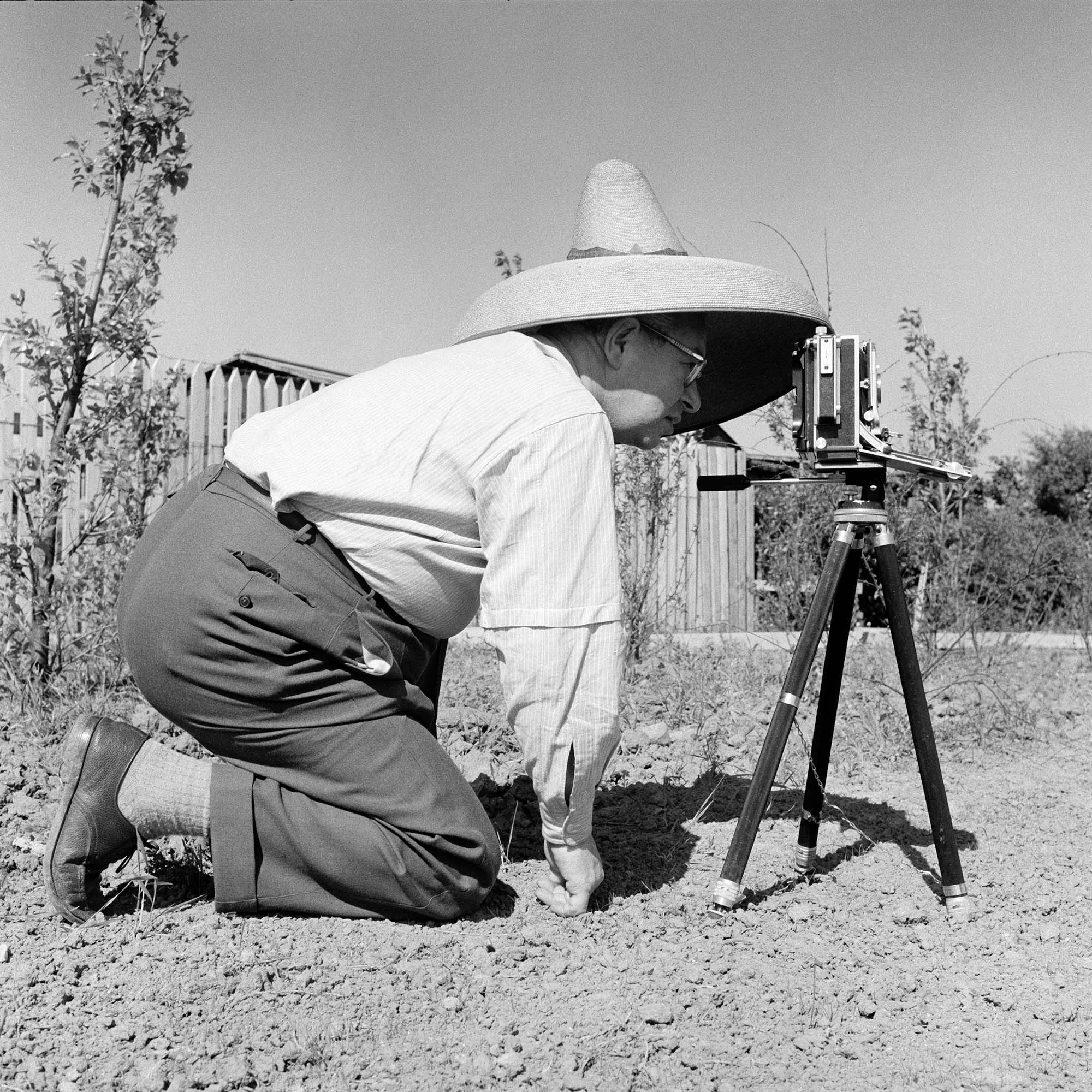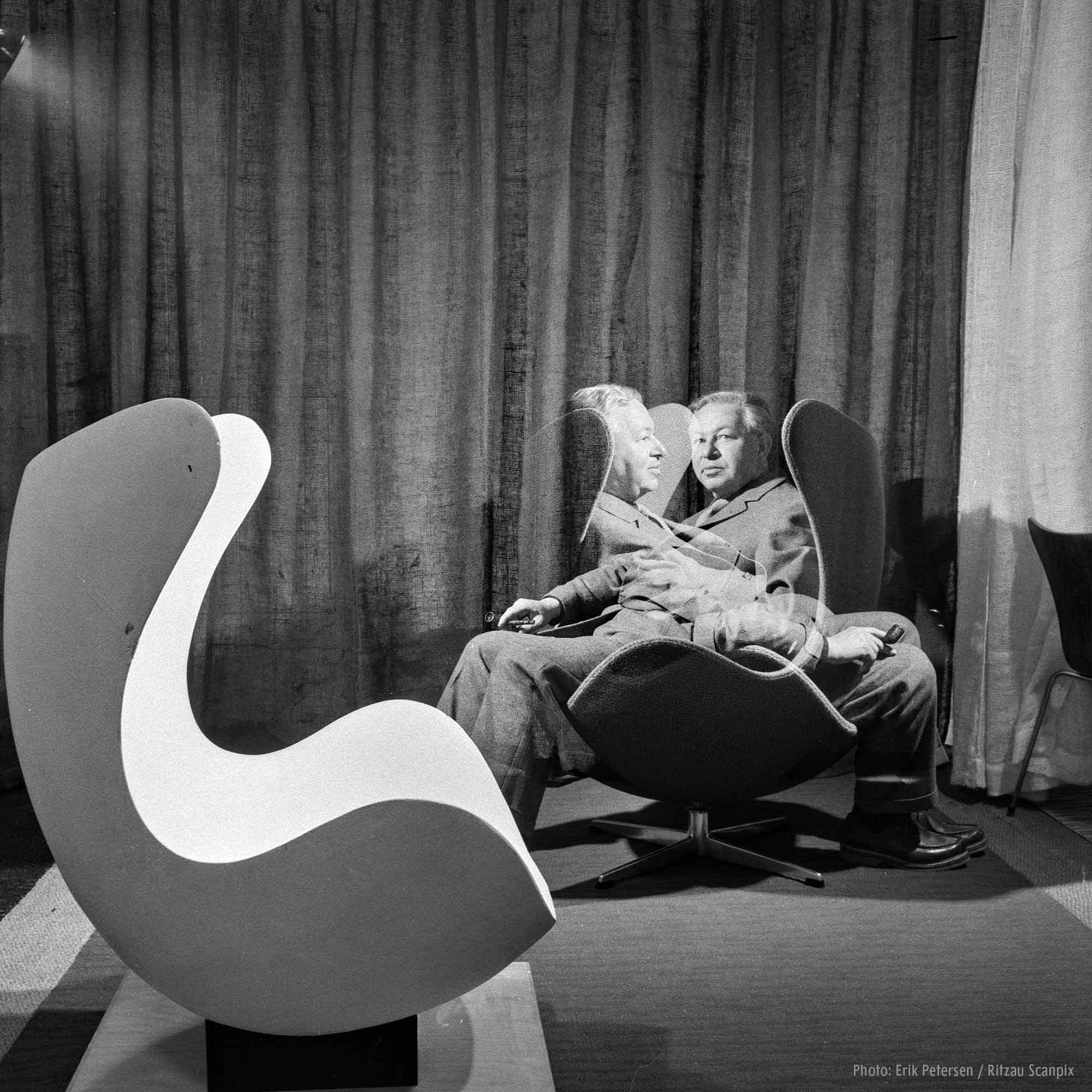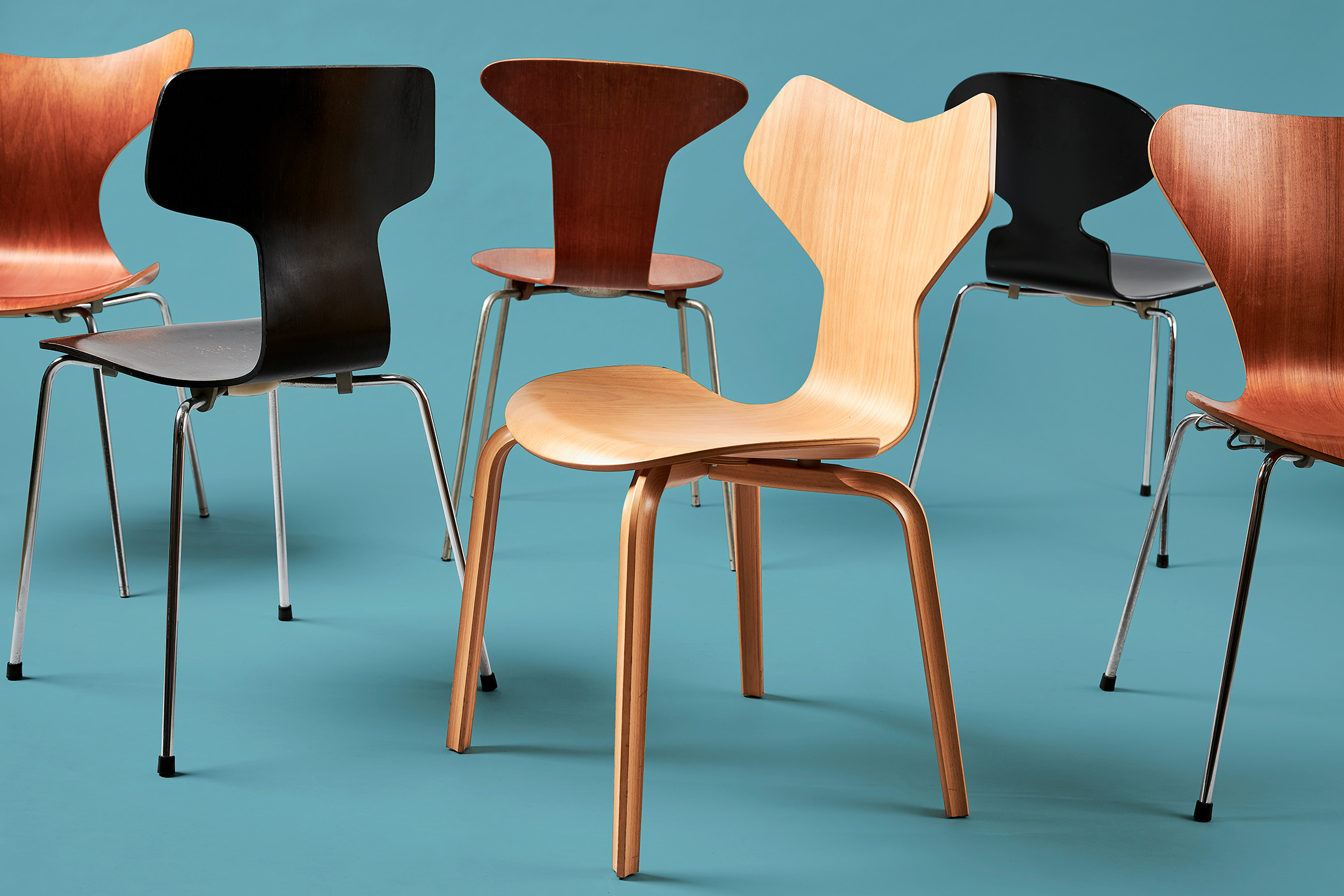
Arne Jacobsen's Ant chair from 1952 was the first of its kind: A small, stackable chair with seat and back as a single moulded shell.
In 1952, Arne Jacobsen and Fritz Hansen wrote design history when they launched the Ant. The small, lightweight, stackable chair is Arne Jacobsen’s version of a design that can be industrially produced and which fits into small, modern combined kitchen and dining spaces. With it, Arne Jacobsen took on a task that also occupied many of his contemporaries and succeeded to bring an innovative and truly trailblazing design into the world.
In an interview with the Danish newspaper Information, 9 February 1953, he said the following about the Ant: ‘I looked at the need: what sorts of chairs are needed? I saw a use for a new chair type for the small combined kitchen and dining spaces that are now common in most new builds: a small, lightweight, affordable chair. Furthermore, I designed it so it could be used in canteens, for example, as a stacking chair. You can stack it by sliding the chairs together, which saves both time and labour.’
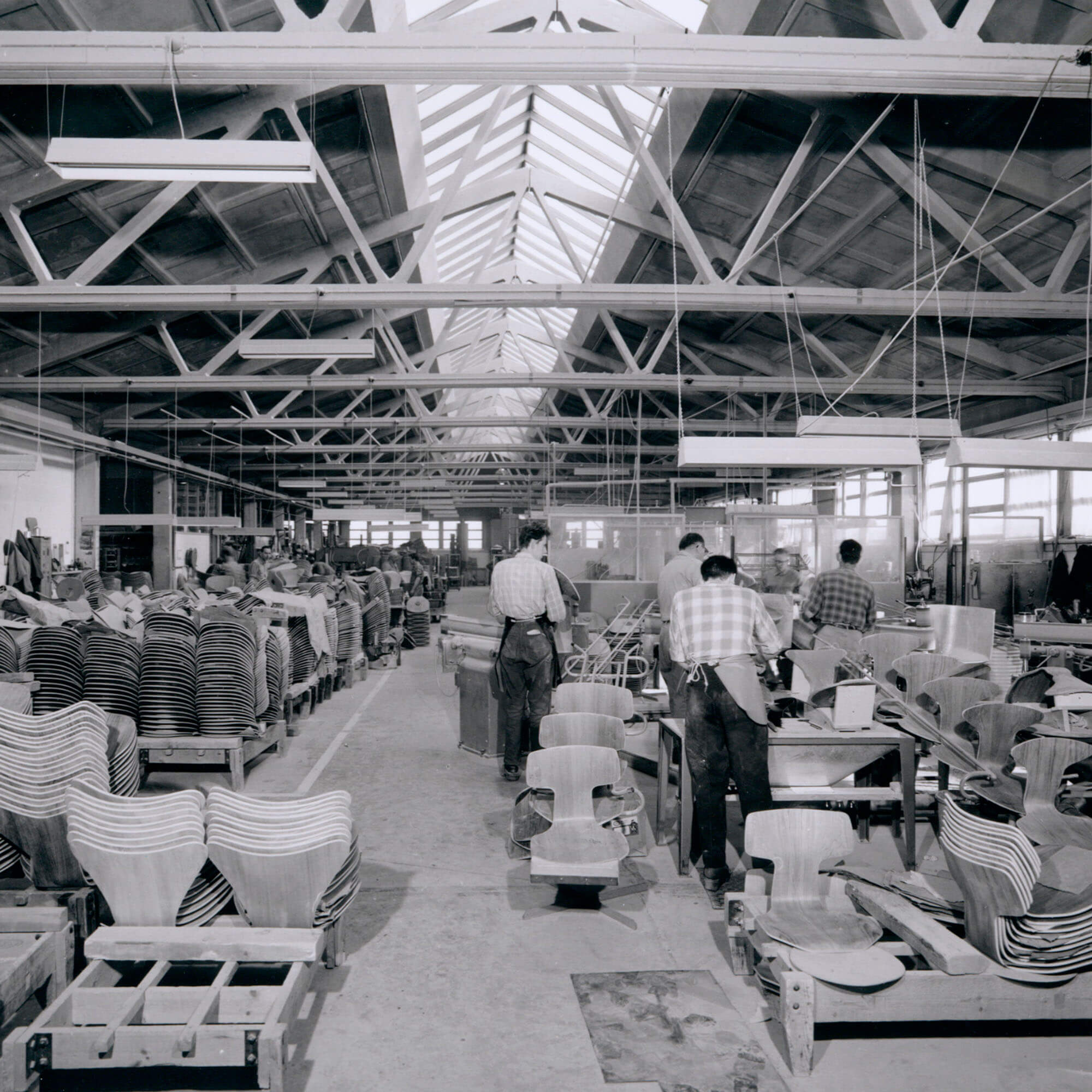
The main design innovation was shaping the seat and back as a single moulded shell. That was possible because Arne Jacobsen and Fritz Hansen did not work in solid wood but in plywood, which was bent in two directions. This double curvature was crucial for making the chair strong enough. To the Danish newspaper Information, Arne Jacobsen explained how he used clay to develop the complex form, working in three dimensions as a sculptor: ‘In the old days, it was pretty easy to design a chair, because the forms were different. My chair is made of compressed and bent plywood, it is three-dimensional. So I had to turn to clay in the design process.’
The lengthy design process is visible in the final result. The shape of the silhouette with the narrow waist reflects that the back had to be narrowest where the curvature was most pronounced.
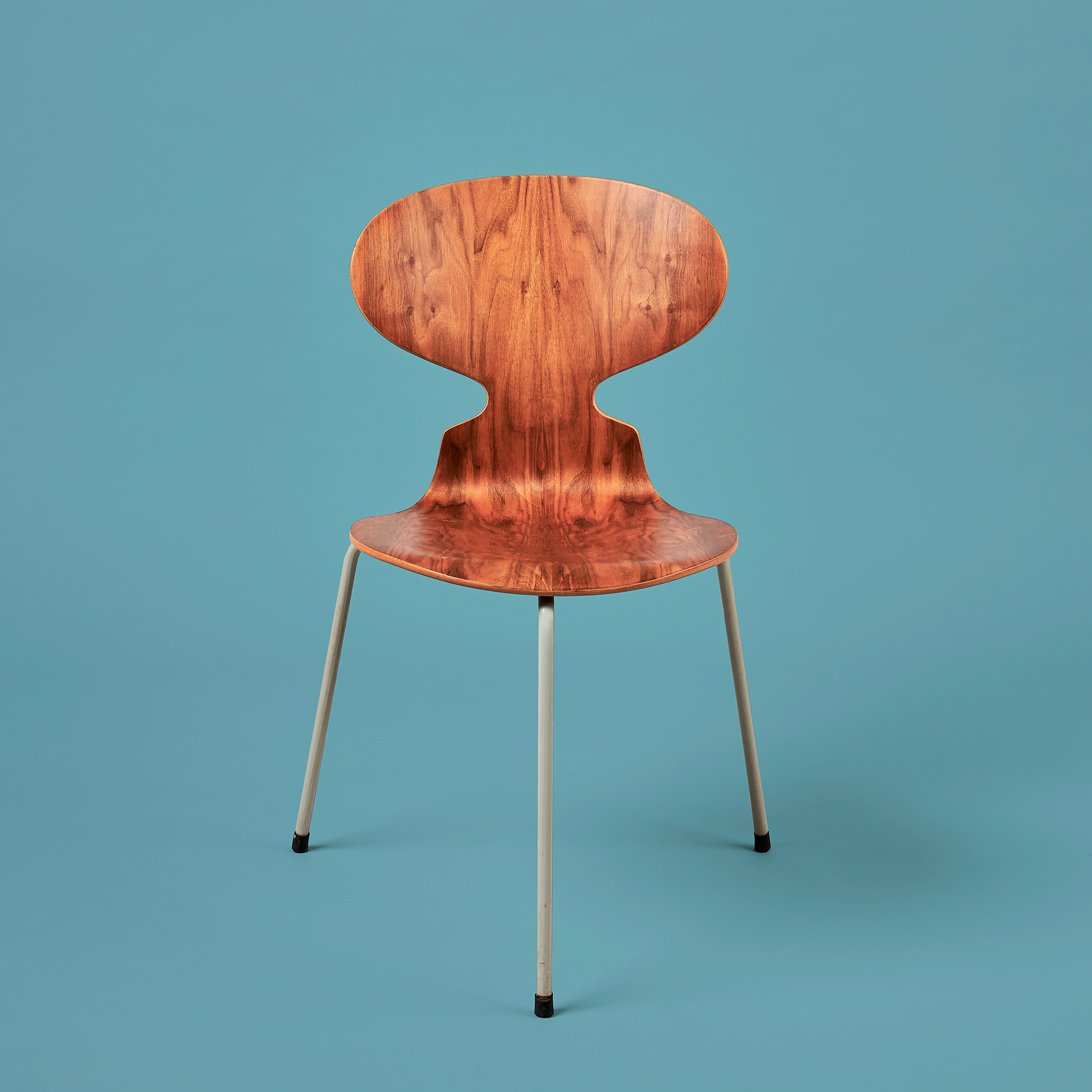
‘In the old days, it was pretty easy to design a chair, because the forms were different. My chair is made of compressed and bent plywood, it is three-dimensional. So I had to turn to clay in the design process.’ - Arne Jacobsen, 1953
The result of the lengthy development process, which lasted a whole year, was a design gamechanger, and ever since the launch in 1952, the Ant has held a prominent position in Danish and international design history. Over the following decades, Arne Jacobsen designed a series of new shell chairs with different silhouettes, all based on the same underlying principle. The most famous of these successors is Series 7 from 1955, whose simple silhouette is now found in private homes and public spaces around the world. That same year, Arne Jacobsen also designed the Tongue and the Munkegaard chair, and two years later, in 1957, the T chair and the Grand Prix chair were launched. The last shell chair from Arne Jacobsen’s hand was the Lily from 1970, which he used in the design of his final major achievement: The building for the National Bank of Denmark in Copenhagen.
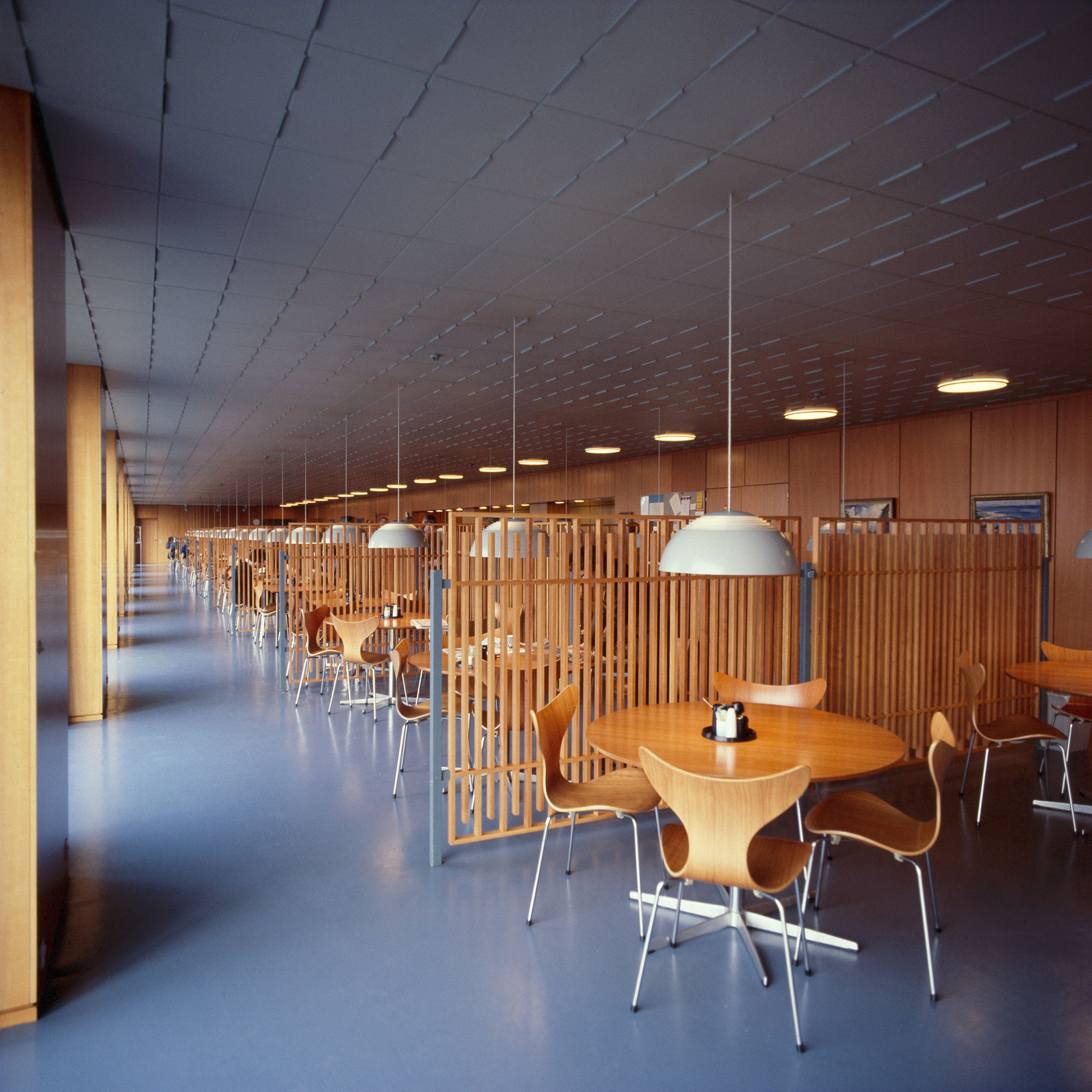

From the 1950s on, Arne Jacobsen used his shell chairs in almost all his major architectural projects, which were created as total designs. Thus, the different shell chair designs found their way into classrooms, town council halls, libraries, offices and workplace canteens all over Denmark.

